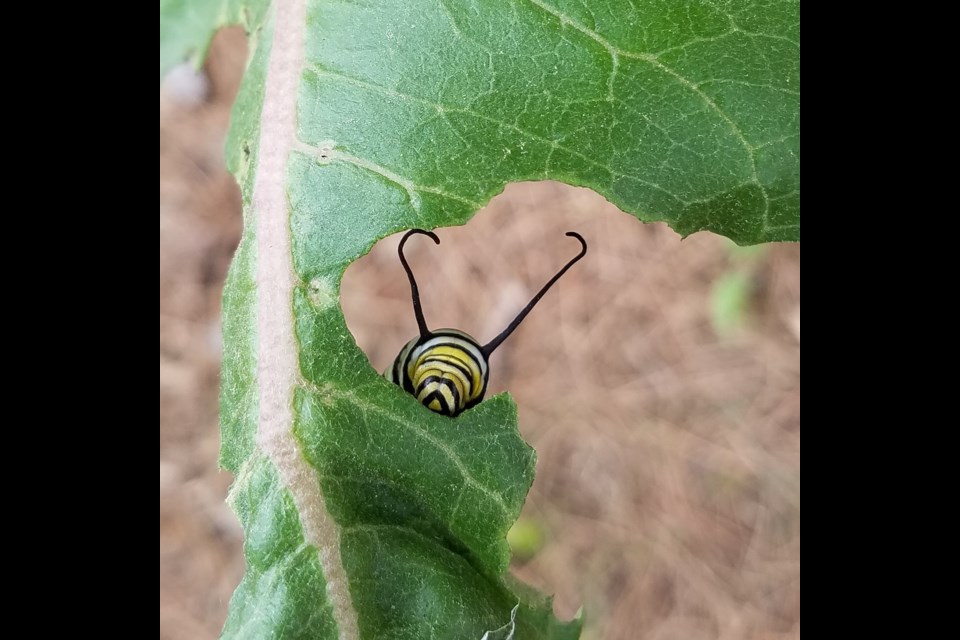What do you like about your home? Do you love to cook big, delicious meals for family and friends? Relax in peace and comfort on your couch or catch up with your neighbors? All of us require healthy food, clean water, and protection to thrive. It turns out that we are not much different than sea stars or monarch butterflies in this regard: we try to craft our way of life based on our needs and preferences. For ourselves, we call it “making a home”, but for other species, we think of it as habitat.
Loss of habitat is one of the most significant factors in the decline of biodiversity worldwide, and the state of global pollinator populations illustrates this fact. Pollinators are animals, such as bees, butterflies, and flies, that transport pollen from one flower to another, facilitating plant reproduction. Current assessments show that 40% of pollinator species in North America are vulnerable to extinction while globally, extinction rates for pollinators are 100 to 1000 times higher than normal. When we lose native plant communities, either through pollution, development or invasive species, pollinators no longer have the resources they rely upon for food, shelter, and reproduction. They no longer have homes that can support them.
And yet, we’ve never relied on pollinators and their ecological services more. Pollinators are found in all terrestrial habitats in Colorado and play central roles in the stability and functioning of food webs. According to the Xerces Society, over 85% of flowering plants on Earth rely on the services of animal pollinators to reproduce. Pollinators also contribute substantially to Colorado’s economy and are vital to keeping fruits, nuts, and vegetables in our diets. Nearly 30% of the crops grown around the world rely on pollinators to some degree.
The remedy is clear; we must do our best to make sure that pollinators and other beneficial wildlife can find homes in our landscapes. But what are the components of pollinator homes? Their food, nectar, and pollen, comes from flowering plants, including species that bloom early in the spring and late in the fall. Native plants are especially attractive since native pollinators have adapted to their characteristics over millions of years. Most pollinators get their water from nectar, but many species, such as butterflies and beetles, require moist places either to get minerals in their diets or for places to raise their young. Pollinators, like many other animals, also use trees, shrubs, and vines as shelter against weather and predators. Some pollinators will seek out specific plants that can feed or shelter their young in the larval stages. Landscapes that include these components will support more pollinators.
But pollinator habitat isn’t necessarily “one size fits all”, which means that plant diversity is key to supporting diverse populations of pollinators. These animals all have different styles, such as the moth’s preference for pale, fragrant flowers versus the butterfly’s attraction to brightly colored blossoms. This shouldn’t come as a surprise – one person’s midcentury modern is another person’s boho chic! An effective pollinator habitat will include native plants of different seasons, shapes, sizes, and colors to make the landscape as inclusive as possible.
Communities and individuals are beginning to understand that the decisions about human habitats can impact the survival of pollinators and other species. Teaching homeowners to replace turf with native plants, revamping park and streetscape plantings and restoring natural areas creates a robust network of potential homes for pollinators and other beneficial insects. A quiet revolution in how we perceive our outdoor spaces is underway – people now expect more from the landscape. Instead of being mere place-fillers, pocket parks, backyards and street medians can contribute to the ecological health of our cities and towns.
This is an ambitious effort that we can all be a part of. Spring is the traditional time for getting our own homes in order. As it turns out, it’s also a great time to improve homes for pollinators, birds, and other wildlife.



